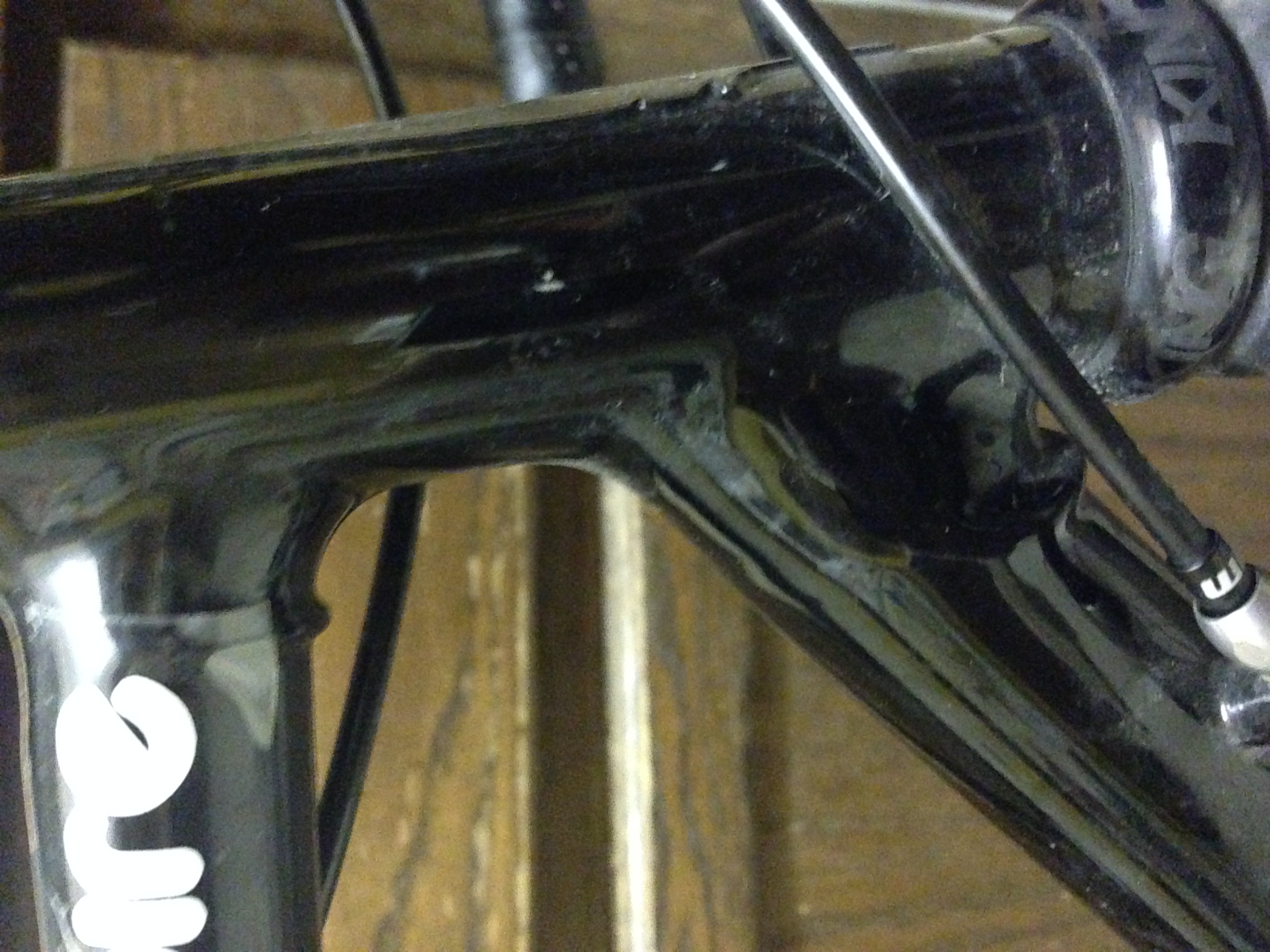Not to disparage any of the very knowledgeable people here, but the best you'll get from a couple of pictures on the internet is a "good guess", or maybe even an "educated guess" but in my mind that's not very good when serious personal injury is on the line. Take the bike to a frame builder - preferably the one who built it for you, but any reputable one will work. Have him/her look at it and give you a professional opinion.
I'd imagine that any reputable frame builder would give you one of two answers based on two pictures: 1) nope, or 2) bring it in and let me look at it. The first answer is either "it's obviously way too far gone" or "I'm running from liability". The second indicates that he thinks there's a chance but needs to get an in-depth, hands on look before making a decision that could affect his reputation, business and livelihood.
My plan is to put the head tube in a vice and use the frame as a lever to bend the head tube back.
This line has been there from the beginning, and I meant to address it initially, but somehow I missed doing so. Unless you're very familiar with metal working, I'd suggest not doing this. You're likely to cause far more damage than you're fixing and not know that you've made it worse. If nothing else, putting the head tube in a vice and clamping down tight enough to bend the top & down tubes without the head tube moving may well crush (or at least ovalize to the point of non-function) the bearing races, or at the very least remove paint and open your nice steel frame up for rust.
A skilled frame builder will have the tools (a frame jig, the appropriate mandrels for bending without causing additional kinks, etc.) and the knowledge of how much straightening it will take before causing additional damage. Your builder may even be able to disassemble the frame, replace the damaged tubes (with original material), and repaint it so it's just as good as new.
As an anecdotal note, I was in a wreck many years ago on a steel frame - I went off the road and head-on into a concrete culvert. I ended up with a cracked vertebrae, and the bike ended up a mess. The fork, formerly with a nice forward sweep was perfectly straight (the only thing that stopped it from having a reverse curve was the tire hitting the down tube), and everything else looked off. I took the bike to a frame builder who put it on his jig. He determined that everything was 1/8 - 1/4" out of alignment, but he felt it was within reason of straightening, so I had him do the work.
The one item that he didn't/couldn't fix was a little wrinkle in the down tube right behind the head tube, very similar to yours (though I didn't have the wrinkle in the top tube). He said there was nothing he could do about it, but felt that it was safe enough that he would ride it. He returned the bike with one warning: if the paint at that wrinkle (which was still nicely attached) ever cracked, get off the bike immediately and never ride it again.
That was almost 30 years ago (OMG how did that happen!?!?) and I've put many thousands of miles on the bike since. I hung it up when componentry for it became difficult to find and when I got too, um... large to comfortably fit on a tight racing frame.
Despite the fact that I was a broke college kid at the time I wouldn't have felt comfortable with getting back on the bike without someone with some professional knowledge taking a look at it. (Of course, I didn't have an internet full of "wisdom" to consult, but still...)


